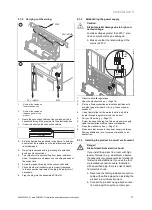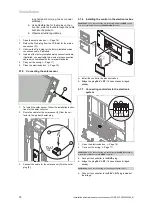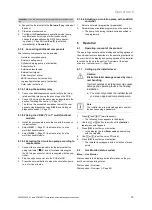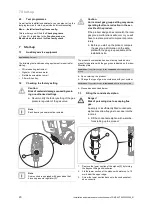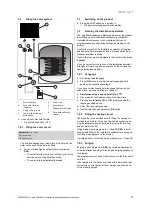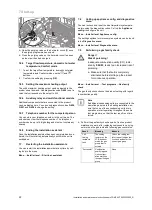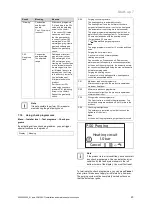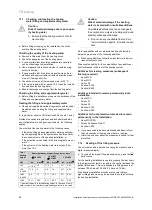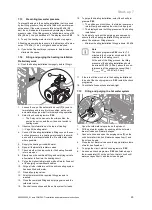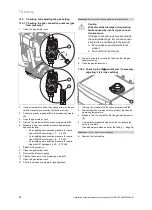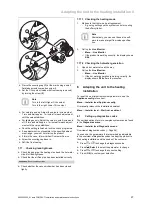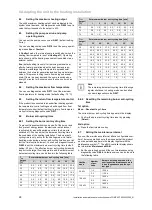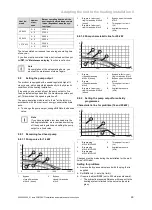
5 Installation
14
Installation and maintenance instructions auroCOMPACT 0020233500_01
C
C
2
1
1
2
B
A
Clearances for connecting the siphon
150L
190L
Max. dimension
(A)
720 mm
960 mm
Dimension (B)
770 mm
1,010 mm
Max. dimension
(C)
300 mm
300 mm
Condensed water forms during combustion. The condensed
water discharge pipe routes this condensed water to the
waste water connection via a tundish.
▶
Use PVC or another material that is suitable for draining
the non-neutralised condensed water.
▶
Only use corrosion-resistant piping material for removing
condensate.
▶
If it cannot be guaranteed that the materials are suitable,
install a system for neutralising the condensed water.
▶
Connect the condensed water discharge pipe
(1)
to a
suitable drain siphon
(2)
.
▶
Ensure that the condensed water in the drain line is
drained properly.
5.5
Solar connection
5.5.1
General information
Caution.
Risk of voltage surge.
Overvoltage may damage the solar plant.
▶
Earth the solar circuit to provide equipo-
tential bonding and overvoltage protec-
tion.
▶
Secure earthing pipe clamps to the solar
lines.
▶
Connect the earthing pipe clamps to a
busbar using 16 mm
²
copper cable.
Note
If there is a fault in the solar system or if the solar
system is connected at a later point, this unit can
be used without being connected to the solar cir-
cuit.
In this case, set diagnostics code d.200 to 1.
▶
Ensure that the heat insulation of the lines is sufficient to
prevent excessive heat losses.
–
The outside lines are exposed to the weather and ul-
traviolet radiation and are pecked by birds, making
them particularly vulnerable; select effective protec-
tion against these risks.
▶
Maintain a minimum downward gradient in order to guar-
antee automatic draining of the solar circuit.
–
Minimum downward gradient that is to be maintained:
4 %
▶
Solder all of the pipelines.
▶
Do not use plastic pipes.
▶
Only use press connections if the temperature that is
permitted by the manufacturer is 200 °C.
Conditions
: The building has a lightning conductor.
▶
Connect the solar collectors to the lightning conductor.
5.5.2
Material for the solar pipes
Caution.
Risk of material damage caused by mech-
anical deformation or burst lines.
Due to the extremely high temperatures that
the solar fluid can reach from time to time,
plastic lines (e.g. PE pipe) may deform or
burst.
▶
Do not use plastic lines.
▶
It is preferable to use copper pipes.
Selecting a suitable line diameter has a great influence on
the solar system's efficiency. The system works with a hose
with an internal diameter of 8 mm.
5.5.3
Maximum length of the solar pipes
Note
To prevent energy losses, the hydraulic lines must
be provided with heat insulation that complies with
the applicable thermal insulation regulations.

















